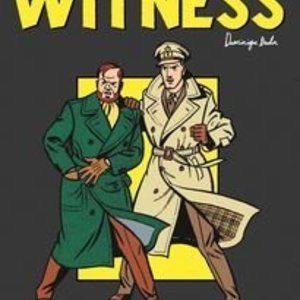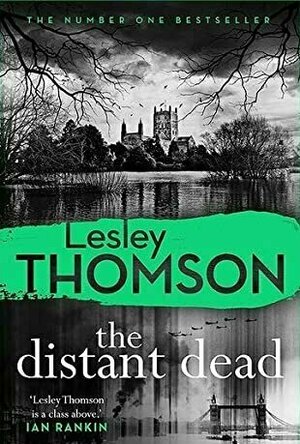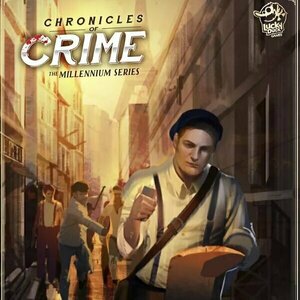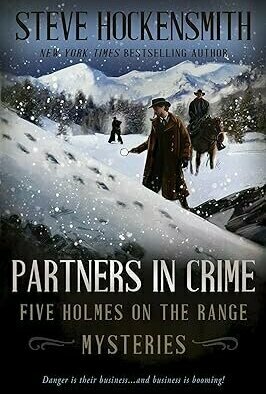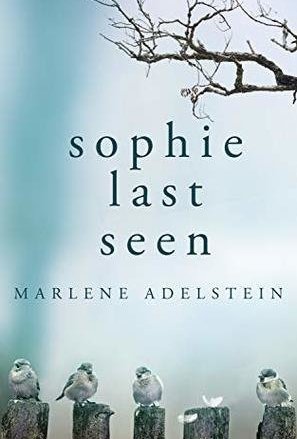
Sophie Last Seen
Book
"A mother's psyche edges toward madness as she tries to solve the puzzle of her daughter's...
crime murder disappearance mystery thriller detective

Simple, Safe & Secret: The 1981 Murder of Joan L. Webster by Eve Carson
Book
It's worse than you think... It was a brisk April morning in 1990 when a woman walking her dog...
True Crime

The Burning Room (Harry Bosch, #17; Harry Bosch Universe, #26)
Book
In the LAPD’s Open-Unsolved Unit, not many murder victims die a decade after the crime. So when a...

Secrets of a Scottish Isle
Book
Spirited American Jane Wunderly must investigate a secret society on an isolated isle off the...
BookInspector (124 KP) rated The Distant Dead in Books
Jul 1, 2021
The beginning of the book was quite slow and confusing for me. This book carries two separate investigations, the one going on in 1940 during WWII, and another investigation happening at the present day. I would have liked more suspense in this book, the culprits were quite easy to guess, but I enjoyed the interactions between the characters while solving both of the crimes. I especially liked the investigation that happened in the 1940ies, I loved reading about that era and the description of West London was very intriguing and educational to me. Also, I really liked to see how different police work was compared to the present day, and I did feel annoyed with the police ignoring the obvious. 😀
The writing style of this book was very enjoyable and well researched. I liked the different settings and atmospheres as well. The chapters have medium length, but it did not leave me bored. As I mentioned before, the ending of the book was quite predictable, but I liked how this book was rounded up. Even though this book was part of the series, I was able to read it as a stand-alone.
So, to conclude, it was a cleverly written crime story, filled with a very wide variety of different and intriguing characters as well as the murder stories that were different but very entwined.
Purple Phoenix Games (2266 KP) rated Chronicles of Crime: 1900 in Tabletop Games
Apr 23, 2021
If you have been following us for a while now you have probably noticed we have published another title from the Millennium Series – Chronicles of Crime: 1400. While that title takes place in the year, well, 1400, this new title is set 500 years later in Paris. How do these games compare? What about the link to the original Chronicles of Crime (review to be posted later)? Should one purchase copies of all Chronicles of Crime games?
Chronicles of Crime: 1900 (which I shall refer to as CoC1900 from here) is a cooperative campaign, deduction, storytelling, puzzle solving adventure game, but I prefer to play it, and its relatives, solo. In it, the player(s) take control of the journalist Victor Lavel, a descendent of the main character from CoC1400. Victor has a limited amount of time to complete his investigation and return the scoop to the local newspaper by which he is employed. Players will be tackling the investigations of our noble hero in attempts to solve the case that is presented.
DISCLAIMER: We were provided a copy of this game for the purposes of this review. This is a retail copy of the game, so what you see in these photos is exactly what would be received in your box. I do not intend to cover every single rule included in the rulebook, but will describe the overall game flow and major rule set so that our readers may get a sense of how the game plays. For more in depth rules, you may purchase a copy online or from your FLGS. -T
To setup, place the main card holder board on the table. Anywhere. I called it. Next, keep the card decks in order (or don’t) and place them near the board. Similarly, place the location boards on the table and ready the main newspaper board for play. Launch the Chronicles of Crime app on a device, choose 1900, and select the scenario you wish to play. The app will drive the remainder of the game, so hold onto your butts!
How do I explain this game succinctly? Well, each of the cases will involve players traveling to different Location Boards and meeting Characters at these locations. Many cases will be involving several Special Items and, new for the 1900 version, Puzzle Cards that players will need to solve or use in special ways in order to progress with certain leads. These Puzzle Cards do not really give the story away or anything, but are merely tools to be used to help solve the cases.
By using the app and scanning the QR codes on the boards and cards players will be learning about the case, viewing the scene of the crime(s), inspecting items, and chatting up locals for information. Play will continue not so much in “rounds” but until the players have enough evidence and a good handle on the situation enough to return to the paper’s office to report to their coworkers all the details of the crime(s) by scanning answers to their questions about the case. The app then assesses the accuracy of the answers and outputs a score. Based on the score achieved players can play again to pick up clues they missed along the way or try another scenario entirely.
Components. As with all CoC games I have played, the components are simply wonderful. Most of what is in the box is cardstock of varying thickness, but the art is what really stands out. This is a gorgeous game and when it is displayed on the table, people become fascinated by its presence. Then when the onlookers see an app driving the gameplay they are hooked. I have heard complaints from other reviewers that the Character cards in the game are lacking in variation, and I would have to agree. Yes, it is set in 1900 Paris, but all the Character cards feature white people, most of whom seem to be upper crust, and with most of the males sporting an awful mustache. So I get that complaint and agree. With inclusivity and diversity being major hot issues currently, you would expect to see more of it in our industry. I would have liked to have come across more diverse characters, and maybe a mini expansion can add many alternate art characters to the game.
All in all I loved this theme of Chronicles of Crime. Being set in Paris and following a young investigative journalist is a nice twist on the protagonists commonly featured in these games. The gameplay is the same as previous versions of CoC, save for the new Puzzle cards. I do enjoy their addition, and look to find more of these in future versions. I love the Chronicles of Crime system so I was bound to love this one as well.
Now, should you buy this version if you already have base Chronicles of Crime? Sure! Why? I like this one because it adds a different mechanic to the game with all-new scenarios, and I enjoy having more of a good thing. I think I personally prefer the theme in 1400 more, but 1900 is a great addition to the family. If you are someone who has and enjoys the base CoC, or any of its iterations, and are looking for more content to devour, then definitely grab a copy of 1900. If you are new to the system, I say go ahead and start with 1900. The Puzzle cards do not add enough complexity to take it out of reach for beginner gamers or those who enjoy lighter games, but certainly add a new and welcome layer to the series. Purple Phoenix Games certainly recommends this one to all our fans. Can’t get enough Chronicles of Crime? Grab 1900. Want to start in the series but London or Medieval times don’t do it for you? Grab 1900. Like tons of portraits of mustachioed white dudes and floofy ladies? Grab 1900. Whatever your motivation, play the game and let me know how you score. I am not advertising my first score here because I am mortified by my performance. (I did get better on subsequent plays.)

The Martian Ambassador
Book
WELCOME TO LONDON, 1899 It has been six years since the discovery of intelligent life on Mars, and...
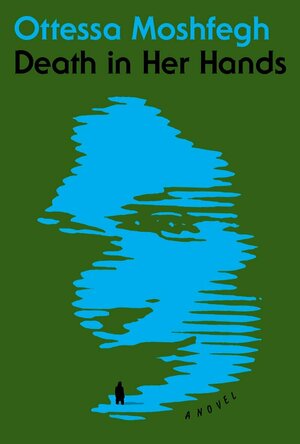
Death in Her Hands
Book
While on her daily walk with her dog in a secluded woods, a woman comes across a note, handwritten...
Mark @ Carstairs Considers (2460 KP) rated Partners in Crime in Books
Jan 4, 2024
Combined, these five stories reach novel length. Individually, they vary in length. The first one seems to wander a bit at first, but as a fan of the series, I didn’t mind. The stories take place around two of the novels, but there aren’t any spoilers. Instead, we get Big Red and Old Red and some great new characters in each story to keep us engaged. The crimes don’t always involve murder, which I enjoyed seeing. If you haven’t tried the series yet, this would be a fun way to sample the characters. If you’re already a fan, you’ll enjoy seeing what the brothers get up to here.
